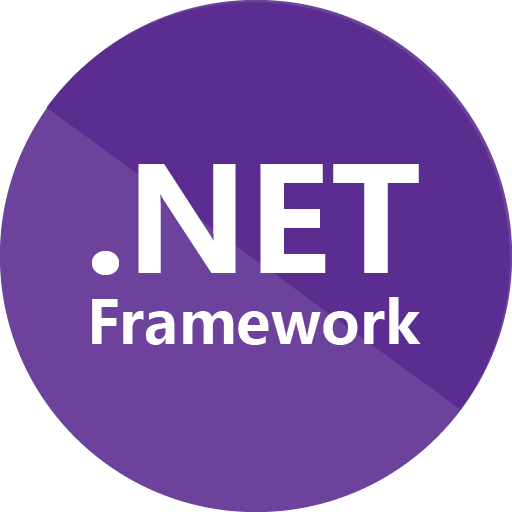
If you’re beginning your journey to become a .NET Framework developer in 2025, you’re on an exciting path! With the .NET ecosystem constantly evolving, understanding the core technologies and skills is essential. This beginner-friendly roadmap will guide you through the fundamentals and set you on track to become a proficient .NET developer.
1. General Development Skills
Start by building a solid foundation in general development skills:
- Understand How the Web Works: Grasp how web applications function, from client-server communication to HTTP basics.
- Version Control: Learn Git, GitHub, and optionally, GitLab.
- Problem-Solving Skills: Practice using Google, Stack Overflow, and tools like ChatGPT to find solutions.
- Data Structures & Algorithms: While not required for entry-level .NET, familiarity with these concepts can boost your problem-solving ability.
2. Learn C# and .NET Versions
Understanding C# and .NET versions is essential for .NET development.
- Master C# 12: Dive into C# 12 and its features.
- Get Familiar with .NET 8: Learn the latest features of .NET 8 and use the .NET Command Line Interface (CLI) for efficient development.
- Explore Upcoming Versions: While not mandatory, it’s good to stay informed about future releases, like C# 13 and .NET 9.
3. SOLID Principles and Clean Code Practices
Writing maintainable, scalable code is essential in any language. Master these principles:
- SOLID Principles: Single Responsibility, Open-Closed, Liskov Substitution, Interface Segregation, and Dependency Inversion.
- Coding Practices: Practice DRY (Don’t Repeat Yourself), YAGNI (You Aren’t Gonna Need It), and KISS (Keep It Simple, Stupid).
4. ASP.NET Core Basics
ASP.NET Core is a modern framework for building web applications. Key areas include:
- Web API and Minimal APIs
- Routing, Middleware, and Filters
- Dependency Injection (DI)
- Authentication & Authorization
5. Databases and SQL
Understanding databases and SQL is fundamental:
- Relational Database Management Systems (RDBMS): Grasp database design, SQL syntax, and stored procedures.
- Popular Databases: Learn to work with SQL Server, Postgres, and MySQL (as an optional tool).
6. APIs and Communication
APIs are central to web development, allowing services to communicate with each other.
- REST APIs: Understand REST principles and how to build Web APIs.
- Advanced API Types: Get familiar with GraphQL (using HotChocolate) and gRPC for performance-intensive applications.
7. Object–Relational Mapping (ORMs)
ORMs streamline database interactions in .NET:
- Entity Framework Core (EF Core): Master the basics, from code-first migrations to data loading techniques.
- Dapper: This lightweight ORM is also beneficial for simpler data interactions.
8. Dependency Injection
Dependency Injection is key to writing testable and maintainable .NET code:
- Microsoft.Extensions.DependencyInjection: The primary DI library in .NET.
- Scrutor: Learn this optional tool for advanced dependency management.
9. NoSQL Databases
Expand your data storage options beyond traditional relational databases:
- Popular NoSQL Databases: DynamoDB, CosmosDB, Redis, and MongoDB.
- Elasticsearch: Useful for search-intensive applications.
10. Caching
Caching helps in optimizing application performance:
- Output and Response Caching: Built-in caching mechanisms.
- Redis: Use StackExchange.Redis for distributed caching.
11. Logging
Efficient logging helps with debugging and monitoring:
- Microsoft.Extensions.Logging and Serilog are popular choices.
12. Messaging and Streaming
Messaging queues facilitate communication between services:
- Messaging Queues: Azure Service Bus, AWS SQS, and RabbitMQ.
- Streaming Services: Consider Kafka, AWS Kinesis, or Azure Event Hubs for real-time data streaming.
13. Testing
Testing ensures code reliability and performance:
- Unit Testing: Learn xUnit, NUnit, and tools like Moq for mocking.
- Integration Testing: Tools like WebApplicationFactory, Docker, and Testcontainers.
- Performance Testing: Tools like K6, NBomber, and JMeter.
14. Real-Time Communication
For applications needing real-time data updates:
- SignalR and Web Sockets are effective tools.
15. API Documentation
Documenting APIs makes your services accessible to other developers:
- OpenAPI/Swagger is the industry standard for REST APIs.
- AsyncAPI: Useful for documenting asynchronous APIs.
16. Task Scheduling
Run background tasks efficiently:
- BackgroundService and PeriodicTimer are popular scheduling methods.
- HangFire: A helpful library for recurring tasks.
17. Monitoring and Telemetry
Monitoring tools are essential for application health:
- OpenTelemetry: For distributed tracing.
- Prometheus & Grafana: Popular for monitoring and visualization.
- ELK Stack: Useful for logging and analytics.
18. Containers and Orchestration
Containers improve deployment consistency across environments:
- Containerization: Master Docker (Podman as an alternative).
- Orchestration: Learn Kubernetes for managing containerized applications.
19. Cloud Technologies
Cloud knowledge is essential in modern development:
- Cloud Providers: Learn to deploy applications on Azure and AWS.
- Serverless Functions: Explore Azure Functions and AWS Lambda.
- File Storage: Familiarize yourself with AWS S3 and Azure Storage
20. Continuous Integration & Deployment (CI/CD)
CI/CD automates the development workflow:
- Popular CI/CD Tools: GitHub Actions, TeamCity, Octopus Deploy, and Azure Pipelines.
21. .NET Libraries
Leverage popular libraries to simplify coding:
- Polly: Resilience and fault-handling.
- FluentValidation and Humanizer.Core for code readability.
- MediatR: Simplifies CQRS (Command and Query Responsibility Segregation) patterns.
22. DevOps and Infrastructure as Code (IaC)
Understanding DevOps and IaC can expand your role in development:
- Tools to Know: Terraform and Pulumi for provisioning infrastructure programmatically.
Conclusion
Congratulations on reaching the end of this roadmap! Remember, consistency in learning and coding is key to mastering .NET Framework development. Dive into projects, explore new tools, and stay curious. The .NET ecosystem offers endless opportunities—your journey as a developer has just begun!
Happy Coding!



Pingback: 10 Game-Changing Habits to Become a Better Programmer - Techy Triq
Pingback: Optimize .NET Core App Load Time: Reduce Load Times by 90% - Techy Triq
Pingback: Must-Know C# 13 and .NET 9 Features - Techy Triq
Can t so that field Here he now State Bank building with your snoot Preferrably that aid